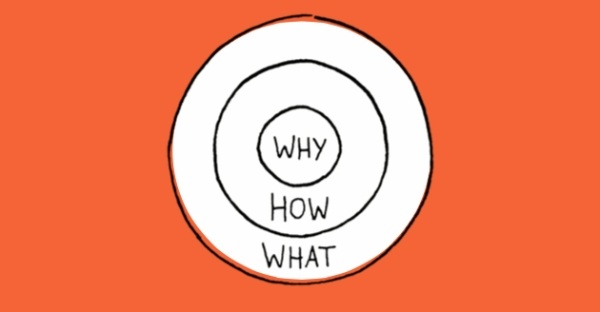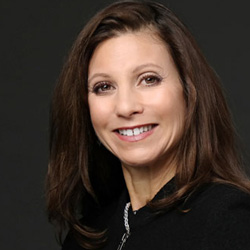Best-in-class (BIC) marketers excel at alignment and accountability: They know to align with the business outcomes that matter to the C-suite, and they know what to accordingly measure. (To learn about the research behind that claim, see results from VEM's 2015 marketing performance management study or view the summary.)
Just about five years ago, marketing consultant Simon Sinek introduced his concept of "The Golden Circle," which has three rings:
- Why: This is the core belief of the business. It's why the business exists.
- How: This is how the business fulfills that core belief.
- What: This is what the company does to fulfill that core belief.

Sinek posits that most companies do their marketing backwards: i.e., starting with "What" they are going to do (events, content, etc.) and then moving to "How" they do it (what channels they use). His primary point: start with "Why."
And we wholeheartedly concur. BIC marketers start with business outcomes, because business outcomes answer the question "Why?"
With so many marketers in the thick of marketing planning, now is a good time to revisit how to apply both the Golden Circle and the best-practices of alignment and accountability to ensure your 2016 marketing efforts make a difference for the business.
How to Apply the Golden Circle Concept to Your Marketing Plan
1. Start with Why
To select the right programs and activities to undertake, first determine what business outcomes you need to have an impact on. A business outcome reflects the specific, quantifiable efforts your organization must achieve if it is to realize the business targets and declare success. A well-crafted business outcome consists of three parts:
- Definitive customer-centric objectives that will affect specific business targets, such as revenue
- A clear and precise measure of success
- The timeframe for accomplishment
Most organizations will have at least two outcomes: one for keeping existing customers and one for acquiring new customers. The more granular you can be about which customers, markets, and products, the more clarity you have around what constitutes success. How closely do your business-outcome statements match the following?
X number of existing customers in each of our top 5 segments adopt the new ABC product by FYE resulting in Y dollars in revenue and increasing share of wallet by Z percent.
2. Decide How
Now that you know what bets your company is making, the next step is to decide how Marketing is going to make a difference. In your marketing plan, there are two key components of the How.
- Goals: These determine how Marketing is going to contribute to the outcome and how Marketing's success will be measured. Marketers do not market to buckets of revenue, they market to people... so make your objectives as customer-centric and behavioral-based as possible: e.g., Increase the referral rate of our tier 1 existing customers 40% by YE20XX to accelerate the sales cycle by 10%.
- Strategy: Now that you know your goal, the next question is to adopt a strategy for achieving it. There are so many potential strategies, from customer-centric strategies, such as ambassadors and persona, to influencer strategies to product strategies, such as bundling. Coming up with the strategy is one step; bringing that strategy to life is another. And that's when the What comes into play.
3. Add the What
For most marketers, the What comes naturally. These are all the campaigns, programs, tactics, and activities that Marketing excels at producing and delivering. The key is to make sure the What is directly linked to the Why. When you create that linkage, it is easier for your line-of-business leaders and financial people to understand Marketing's value, impact, and contribution.
How to Make Your Marketing Plan Accountable
Now that your plan answers Why, How, and What, you are well on your way to achieving alignment.
To complete your plan, you need to make it measurable. Two concepts help address accountability.
1. Outcome-Based Performance Targets
Performance targets are your stakes in the ground. The outcomes, objectives, programs, and tactics all need performance targets. Performance targets provide the context when you report results. They enable you to ascertain whether you achieved success, what is working, and what isn't working.
Setting performance targets can be difficult if you're not used to doing it. Many organizations avoid this step, arguing that they don't have the data. But there are benchmarks and usually other data points you can use to set a performance target.
This is too important a step to avoid. Targets help your drive performance improvement and initiate a discussion about priorities. They help you define an agreed-upon direction, bring focus, and facilitate adjustments. Performance targets, when set properly, serve as both an accountability and an alignment tool.
Having outcome-based vs. activity-based performance targets is a key differentiator between best-in-class marketers and the rest of the pack. (Learn more about the types of metrics in this article, "Which Metrics Measure Marketing's Impact on Business and Influence Strategic Direction?")
2. Metrics Chains
A metrics chain is the sequence of metrics that form the links between activity, output, operational, and outcome metrics. These links and associated data serve as an excellent vehicle to connecting your marketing efforts to business results. Metrics chains thus become the foundation for your reporting/dashboard.
The first key step is to craft concrete and related performance targets between your objectives and your activities. When the metrics chain is clear, you avoid wallowing in a sea of data. You know what you need to know. Working from Why (the outcome you need to have an impact on) and then moving to What (the activities you need to produce) helps ensure the linkage.
For example, let's say your company needs to acquire a certain number of new customers in a certain segment to achieve revenue and market share targets. Your company needs Marketing to generate some number of qualified prospects from that segment who will participate in a trial. As the marketing team, to support the objective, you develop a four-touch (e.g., direct messages, whitepaper, presentation, newsletter) multichannel (email, website, social, webinar, slide share, syndication, etc.) campaign based on the customer buyer process and key personas. Each of those touches and channels has a performance target designed to produce trial inquiries. When properly constructed, your metrics will form a chain between all your marketing programs, product inquiries, trials with customer acquisition, and market share.
When you've completed the alignment process properly, your marketing plan provides a clear line-of-sight between marketing activities, investments, and business outcomes, making the metrics and the data chains easier to identify. And, just as important, you will be better able to defend the budget needed to achieve your goals.
Take the first step. For some marketers, creating the metrics chains is an easy next step in their journey to alignment and accountability. For others, it may be a bit more of a hop then a step. Regardless, this approach will help every marketing team begin with Why, enabling you operate as a more strategic performance-based organization, rather than starting with What, which begins to characterize marketing as more an on-demand service organization. (Ready to try it? Learn more about how to use this alignment and accountability approach.)






